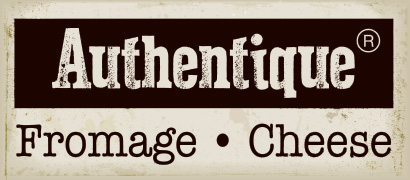Glossary
Discover the cheese talk!
Ripening/maturation/affinage: All the steps during which the paste changes and acquires its texture, aromas and flavours. Temperature, humidity and storage play essential roles in the process. Cheese can be “surface-ripened” (Camembert), “interior-ripened” (cheddar) or sometimes both.
Ammonia (odour of): Strong odour given off by cheeses that are overripe, especially soft-rind cheeses.
Bacteria: Enzymes or microorganisms that are perfectly contained and controlled, used in cheese-making.
Curd: A solid formed by coagulating milk. The curd is what undergoes the various ripening operations and changes to become cheese.
Coagulation/curdling: The first step in the cheese-making process, during which milk solids separate from the whey, or “petit lait.”
Cooking: A step in the process of making firm and hard cheeses; the curd is heated to reduce the amount of moisture.
Rind: The external protective layer of the cheese that forms naturally. Most of the time it is edible. It can be bloomy, brushed or washed and can be natural or artificial.
Bloomy rind (bloom): White fuzz on the surface of soft-rind cheeses such as Canadian brie and Camembert. It is achieved by spraying the surface of the cheese with Penicillium candidum. The bloom is perfectly fine to eat and enhances the texture and flavours.
Washed rind: The rind of certain cheeses is washed periodically during ripening, which explains the rind’s coppery or beige shades.
Draining: During this step in the cheese-making process, the whey is expelled before the curd undergoes the next step: pressing.
Fermentation: One of the steps in the cheese-making process, during which the bacteria act on the paste, causing it to develop the taste, texture and character specific to each cheese.
Processed cheese: Also known as “processed cheese preparation” containing cheeses (such as cheddar) and other dairy products.
Curds: Curds form during the initial cheese-making steps (coagulation) and are subsequently pressed or eaten as is, in the case of cheese curds.
Moisture: The amount of water contained in cheese. This is expressed as a percentage.
Lactose: A natural sugar in milk. Ripening eliminates most of the lactose. Fresh cheeses contain a lot, while firm or hard cheeses contain hardly any.
Marbled: Cheese made from a blend of white and orange curds pressed together.
M.F.: Abbreviation of milk fat.
Unripened: Cheese that is simply drained, moulded and packaged for sale without having time to ripen.
Openings, eyes: Holes in cheese. The “eyes” of some openings form naturally during refining due to the gases released by fermentation; other small holes occur because of the space that remains between the curds during pressing.
Pasteurization: A process during which milk is heated at a high temperature to destroy certain bacteria. Most Canadian cheeses are made from pasteurized milk.
Stretched cheese: The paste is heated and worked mechanically until it takes the shape of a thread, which is then stretched and cut, before being pressed into moulds of various shapes.
Fresh cheese: A cheese that has not been ripened, such as cream cheese.
Soft-ripened: Paste that is fermented, then ripened, but is neither cooked nor pressed (brie, Canadian Camembert).
Blue-veined cheeses: The paste of blue-type cheeses that contain blue or purple streaks created by injecting Penicillium mould into the curd.
Penicillium: A type of microorganism used for the fermentation of blue-veined cheeses.
Rennet: An enzyme used to accelerate the coagulation of milk.

